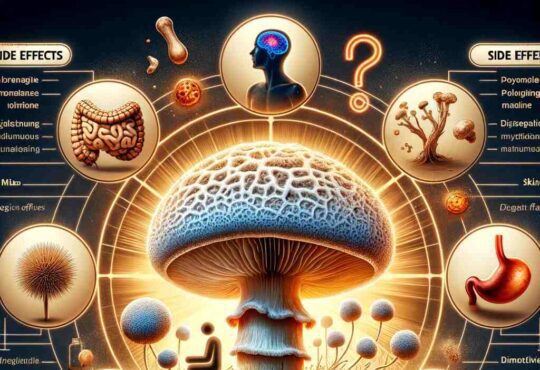Unraveling the Mystery
Introduction
In this article Understanding the distinction between bulging disc vs herniated disc is crucial for anyone experiencing back pain or related symptoms.


An overview of spinal disc anatomy
Spinal discs, located between each vertebra, play a vital role in maintaining the stability and flexibility of our spinal column.
Importance of understanding the difference between bulging and herniated discs
Understanding the distinction between bulging disc vs herniated disc is crucial for anyone experiencing back pain or related symptoms.
Preview of the article’s content
This comprehensive article aims to shed light on the intricacies of these conditions, providing valuable insights into their causes, symptoms, diagnostic techniques, and treatment options.
The Spinal Disc: Under the Microscope
Structure and composition of spinal discs
To unravel the mystery of bulging and herniated discs, we first need to explore the intricate structure and composition of the spinal disc. Made up of a tough outer layer called the annulus fibrosus and a gel-like inner core called the nucleus pulposus
Functions and importance of spinal discs in the body’s mechanics
These intervertebral discs act as shock absorbers, enabling fluid movement and preventing bone-to-bone friction within the spine.
How spinal discs degenerate over time
However, as we age, the discs naturally degenerate, losing water content and elasticity, making them more susceptible to injury.


Bulging Disc vs Herniated Disc
Explaination of Bulging Disc
Definition and characteristics of a bulging disc
A bulging disc refers to an abnormal protrusion of the intervertebral disc beyond its normal boundaries. Unlike a herniated disc, the outer layer of the disc remains intact in this condition.
Causes and risk factors leading to bulging discs
Causes of bulging discs are diverse, ranging from age-related degeneration and sudden trauma to strenuous physical activities and improper lifting techniques.
Common symptoms associated with a bulging disc
Symptoms may include localized back pain, numbness, tingling, and muscle weakness.
Diagnostic tools and techniques for identifying a bulging disc
Diagnostic tools such as MRI scans and physical examinations are commonly employed to identify and assess the severity of a bulging disc.


Herniated Disc Unveiled
Definition and distinguishing features of a herniated disc
Unlike a bulging disc, a herniated disc involves a rupture or tear in the annulus fibrosus, resulting in the displacement of the nucleus pulposus. This condition, also known as a slipped or ruptured disc.
Causes and predisposing factors for herniated discs
It often occurs due to age-related wear and tear, traumatic injuries, or repetitive movements causing excessive strain on the spine.
Recognizing symptoms specific to a herniated disc
Symptoms may vary depending on the location of the herniation but can include radiating pain, muscle weakness, and sensory disturbances.
Diagnostic methods utilized to detect a herniated disc
Advanced imaging techniques, such as CT scans and discography, are valuable tools for diagnosing a herniated disc.
The Battle of the Discs: Key Differences
Differentiation based on disc displacement
Understanding the key differences bulging disc vs herniated disc is crucial to ensure accurate diagnosis and appropriate treatment. While both conditions involve disc abnormalities, a bulging disc refers to an overall protrusion, whereas a herniated disc involves a more significant displacement or rupture.
Variances in symptoms experienced with a bulging disc vs herniated disc
Symptoms experienced with a bulging disc vs herniated disc are usually localized
Impact on nerve compression between a bulging and herniated disc
While a herniated disc often results in radiating pain and other neurological symptoms due to nerve compression.
Contrasting treatment approaches for bulging disc vs herniated disc
Treatment approaches for bulging disc vs herniated disc may include conservative management, physical therapy, medications, or in severe cases, surgical intervention, depending on the specific condition.
Treating a Bulging Disc: Strategies and Options
Non-surgical management techniques for a bulging disc
Managing a bulging disc often begins with non-surgical approaches aimed at reducing pain and inflammation. These may include rest, heat or cold therapy, and over-the-counter pain medications.
Physical therapy exercises and their efficacy in relieving symptoms
Physical therapy plays a crucial role in strengthening the supporting muscles and improving spinal stability. Specific exercises, such as gentle stretching and low-impact aerobics, can alleviate symptoms and promote healing. Medications are also commonly prescribed for bulging discs.
Alternative treatment modalities worth considering
In some cases, healthcare providers may recommend alternative treatment modalities like chiropractic adjustments, acupuncture, or spinal decompression therapy to complement traditional approaches.
Herniated Discs: Treatment Paths to Explore
- Conservative treatment options for a herniated disc
- Importance of rest, medications, and lifestyle adjustments
- Physical therapy and exercises specific to herniated discs
- Surgical interventions and procedures for severe herniated discs
When it comes to treating a herniated disc, conservative management is often the first line of defense. This may involve a combination of rest, pain medications, muscle relaxants, and anti-inflammatory drugs. Lifestyle adjustments, such as maintaining proper posture and avoiding activities that exacerbate symptoms, can significantly contribute to the healing process.
Physical therapy, including specific exercises targeting core strength and spinal stability, can also aid in recovery. However, in severe cases where conservative measures fail to provide relief, surgical interventions like discectomy or spinal fusion may be considered to alleviate persistent pain and nerve compression.
Prevention: Safeguarding Your Discs from bulging disc vs herniated disc
- Lifestyle modifications to reduce the risk of disc degeneration
- Exercises and activities promoting core strength and spinal health
- Ergonomic adjustments for individuals susceptible to disc issues
Prevention is always better than cure when it comes to maintaining the health of our spinal discs. Adopting a healthy lifestyle that includes regular exercise, a balanced diet, and avoiding smoking can significantly reduce the risk of disc degeneration.
Engaging in activities that promote core strength, such as yoga and Pilates, along with low-impact exercises like swimming or walking, can help keep the spine strong and flexible. Furthermore, individuals with jobs involving prolonged sitting or heavy lifting should consider ergonomic adjustments, such as using lumbar support, maintaining proper posture, and taking frequent breaks, to minimize the strain on their discs.
Recovery and Rehabilitation of bulging disc vs herniated disc: Optimizing the Healing Process
- The importance of patience and rest in the recovery journey
- Rehabilitation techniques to improve strength and flexibility
- Post-treatment care and self-care practices for maintaining disc health
Patience and rest are key elements in optimizing the healing process of damaged discs. It is important to listen to the body’s signals and avoid overexertion, allowing sufficient time for recovery. Engaging in rehabilitation techniques, such as gentle stretching exercises and low-impact aerobics, can improve strength, flexibility, and overall spine health.
Additionally, post-treatment care is crucial for maintaining disc health. This may involve implementing healthy lifestyle habits, like regular exercise and good posture, as well as specific self-care practices, such as using ergonomic pillows and supports, to prevent future disc-related issues.
Summary
- Recap of the main points discussed throughout the article
- Emphasizing the key differences between bulging and herniated discs
- Encouragement for seeking medical advice for accurate diagnosis and treatment
In summary, understanding the distinction between bulging and herniated discs is essential for identifying and treating back pain effectively. While a bulging disc involves an overall protrusion, a herniated disc signifies a more significant rupture or displacement.
The symptoms and treatment options for these conditions vary, emphasizing the importance of seeking professional medical advice for accurate diagnosis and appropriate treatment. Remember, early intervention and proper management play a vital role in the successful resolution of disc-related issues.
Frequently Asked Questions (FAQs)
To address some common queries related to bulging disc vs herniated disc, let’s delve into the frequently asked questions:
Is there any correlation between age and the development of bulging disc vs herniated disc?
Age is a major contributing factor in the development of bulging disc vs herniated disc, as the natural degenerative process weakens the discs over time.
Can physical therapy alone be sufficient in treating both conditions?
Physical therapy can be highly effective in managing both bulging and herniated discs, as it focuses on strengthening the supporting muscles, improving flexibility, and alleviating symptoms.
What are the potential long-term complications of untreated bulging disc vs herniated disc?
If left untreated, bulging or herniated discs can lead to chronic pain, nerve damage, mobility issues, and in severe cases, loss of bladder or bowel control. Early intervention is crucial to avoid potential complications.
Are there risk factors that increase the chances of developing multiple disc issues?
Risk factors that can increase the chances of developing multiple disc issues include a family history of disc problems, occupations involving repetitive strain on the spine, and poor posture habits.
E. How effective is surgery in treating severe cases of bulging or herniated discs?
Surgery is usually considered a last resort for severe cases where conservative treatments have failed to provide relief. The effectiveness of surgery varies depending on individual factors, and it is necessary to consult with a qualified healthcare professional to determine the most appropriate treatment option.
By delving into these frequently asked questions, we hope to provide a clearer understanding of these conditions and empower individuals to make informed decisions about their spinal health.






